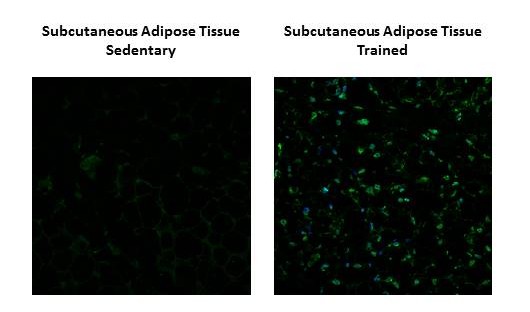Exercise-induced adaptations to white and brown adipose tissue
Kristin I. Stanford
Dorothy M. Davis Heart and Lung Research Institute; Department of Physiology and Cell Biology, The Ohio State University Wexner Medical Center, Columbus, OH 43210, USA
Exercise training is a well-established tool to improve metabolic health by increasing whole-body glucose homeostasis and insulin sensitivity. Exercise training also results in adaptations to almost all tissues in the body, and these changes likely contribute to the beneficial effects of exercise on glucose homeostasis. Regular physical activity and exercise have long been known to cause adaptations to white adipose tissue including decreases in cell size and lipid content and increases in mitochondrial proteins. Exercise training also increases both the expression of the brown adipocyte marker uncoupling protein-1 (UCP1) and the presence of brown-like adipocytes in scWAT, also known as ‘beiging’. Recent studies in our laboratory have demonstrated that exercise training changes the expression of thousands of genes in subcutaneous white adipose tissue (scWAT) in mice and humans. Transplantation of trained scWAT in sedentary recipient mice resulted in striking improvements in skeletal muscle glucose uptake and whole-body metabolic homeostasis. Given these striking effects of exercise on scWAT, we have begun to investigate the effects of exercise training on the metabolic function of brown adipose tissue (BAT) that have not been extensively studied. Interestingly, our preliminary data indicate that the effects of exercise training on BAT are in stark contrast to the effects of exercise training on scWAT; exercise training decreases mitochondrial activity in BAT. Because the decrease in BAT mitochondrial activity occurs after the increase in scWAT mitochondrial activity, we propose that the exercise-induced decrease in mitochondrial activity in BAT is compensatory for the increased mitochondrial function in scWAT.









You must be logged in to post a comment.